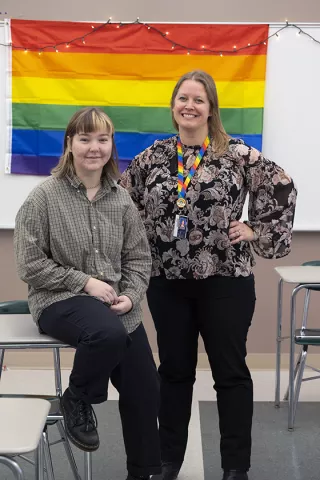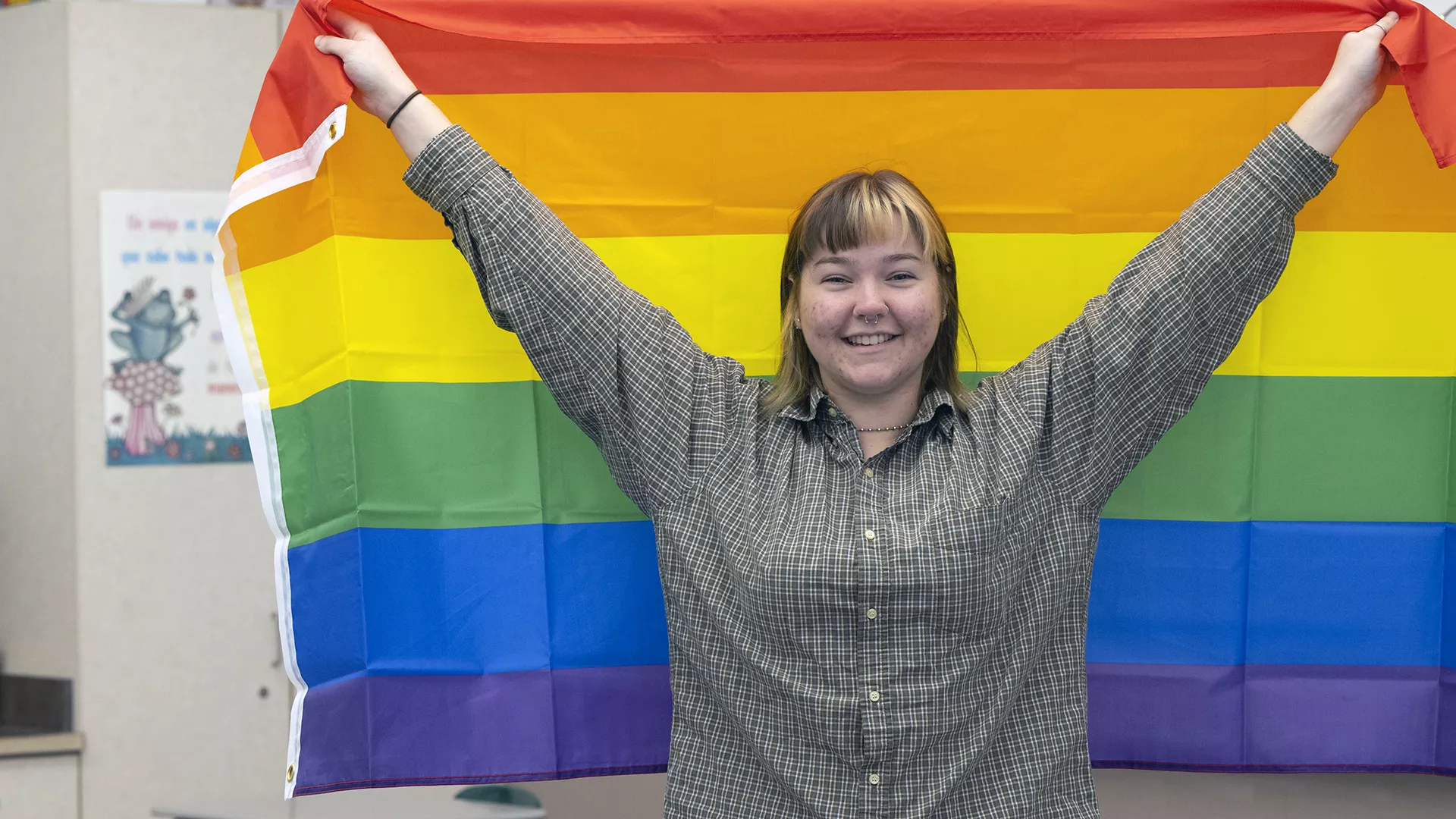Key Takeaways
- A community is at risk when the nation’s culture wars spills into a middle school classroom, affecting several area schools.
- NEA members turned to their union for support—winning more protections along the way!
- Learn what you need to know about LGBTQ+ rights in schools.
The seaside village of Stonington is tucked into the southeast corner of Connecticut and is best known for setting the scene of the 1988 film Mystic Pizza. The town’s tight-knit community usually sticks together.
But that bond started to unravel in October, when the nation’s culture wars spilled into a middle school classroom. The epicenter of the debate? A classroom with rainbow pride flags on display.
Why the flags fell
The parent of a Stonington middle schooler complained to administrators, saying that her child was upset over seeing the pride flags. The parent believed the flags violated school policy: Nothing political in the classroom.
School officials worried.
“They see what’s happening across the country and don’t want to be the next target … of conservative ire,” says Chris Teifke, UniServ director for the Connecticut Education Association (CEA).
While the district consulted with their attorneys, the teacher who displayed the flags had to remove a 3-by-5-inch flag taped to a whiteboard and another one sticking out of a cup of pencils.
The mandate spread to other classrooms and the nearby high school.
“It was startling,” says Jennifer Stefanowicz, a Spanish teacher at the high school and co-advisor of the Alliance for Acceptance (AFA), an after-school club that supports and advocates for LGBTQ+ students. “It was hard to believe this could happen [in our school]. We’re an inclusive and safe space for all students.”
The students did not take the news lightly.
‘My identity is not political’

Rachel Fretard, a senior at the school who uses the pronoun “they,” said they felt “disappointed and exhausted, because this is another thing we have to fight against.”
Fretard adds, “My identity is not political, and the fact that these things have been [blown out of proportion], involving our government, and threatening the rights of a community of people … is such a dystopian idea to me.
“To have something removed from your classroom that represents your belonging there and the community you identify with … is disheartening.”
And so, Fretard and their peers worked with AFA advisors to take meaningful actions.
The group passed out pride flags and pins to students and encouraged classmates to wear rainbow-colored clothes. The students also mobilized parents, who then packed a board meeting and gave public comment in favor of the flags.
“We wanted to make it known that not only are we here, but people support us,” Fretard says.
While students were taking action, the local union was making its own moves.
Union pushes for more LGBTQ+ protections
When the flags were removed, educators turned to the local union, the Stonington Education Association (SEA).
The union immediately held a membership meeting, followed by an emergency meeting with district officials and a school board meeting in the following days.
SEA made its case, citing rulings by various courts; and district officials and attorneys agreed. The flags were reinstated just two weeks after they came down.
But educators and their local union asked for more, including a school board resolution—which they crafted based on an NEA template—that explicitly says pride flags can be displayed in schools as symbols of diversity, equity, and inclusion; not as political statements. They also wanted anti-discrimination language specific to LGBTQ+ employees in their contracts for every bargaining unit. Both measures were approved by the board.
“The real power of this wasn’t just that we got the pride flags back,” says Teifke. “It was affirmation from the board to recognize LGBTQ staff and students through the resolution and contract. In so many ways, that’s the greater power of NEA, the union. We’re more than just playing defense.”
Q&A: What You Need to Know About LGBTQ+ Rights in Schools
It’s important to know what federal protections exist for LGBTQ+ students and educators. NEA’s legal counsel has provided guidance on protections under federal law. Here are some answers to frequently asked questions:
What protections do public school employees have?
Under Title VII of the Civil Rights Act, employers cannot consider an employee’s sexual orientation or gender identity when deciding who to hire, fire, or promote, or in assigning responsibilities, setting salary, providing benefits, or determining any other significant aspect of employment.
Title IX of the 1972 Education Amendment adds more protections against discrimination in fringe
benefits; selection and financial support for trainings and conferences; and more.
What protections do students have?
Under Title IX, students can participate in school clubs, student office, and field trips regardless
of sexual orientation or transgender status.
A transgender student can participate in athletic contests on teams that match the student’s gender identity. (Some states have passed laws banning transgender participation in school sports, but most legal challenges to these laws have succeeded so far.)
Plus, a transgender student can follow the dress code rules and use the bathrooms or locker rooms that match their gender identity. (Again, some states have recently passed contrary laws. In the past, lawsuits challenging bathroom restrictions were overwhelmingly successful.)
How can educators advocate for LGBTQ+ students?
As employees, educators’ free speech rights are more limited than those of students. Your strongest protections come when you’re speaking off duty as a private citizen on matters of public concern, for example, at a school board meeting or rally.


